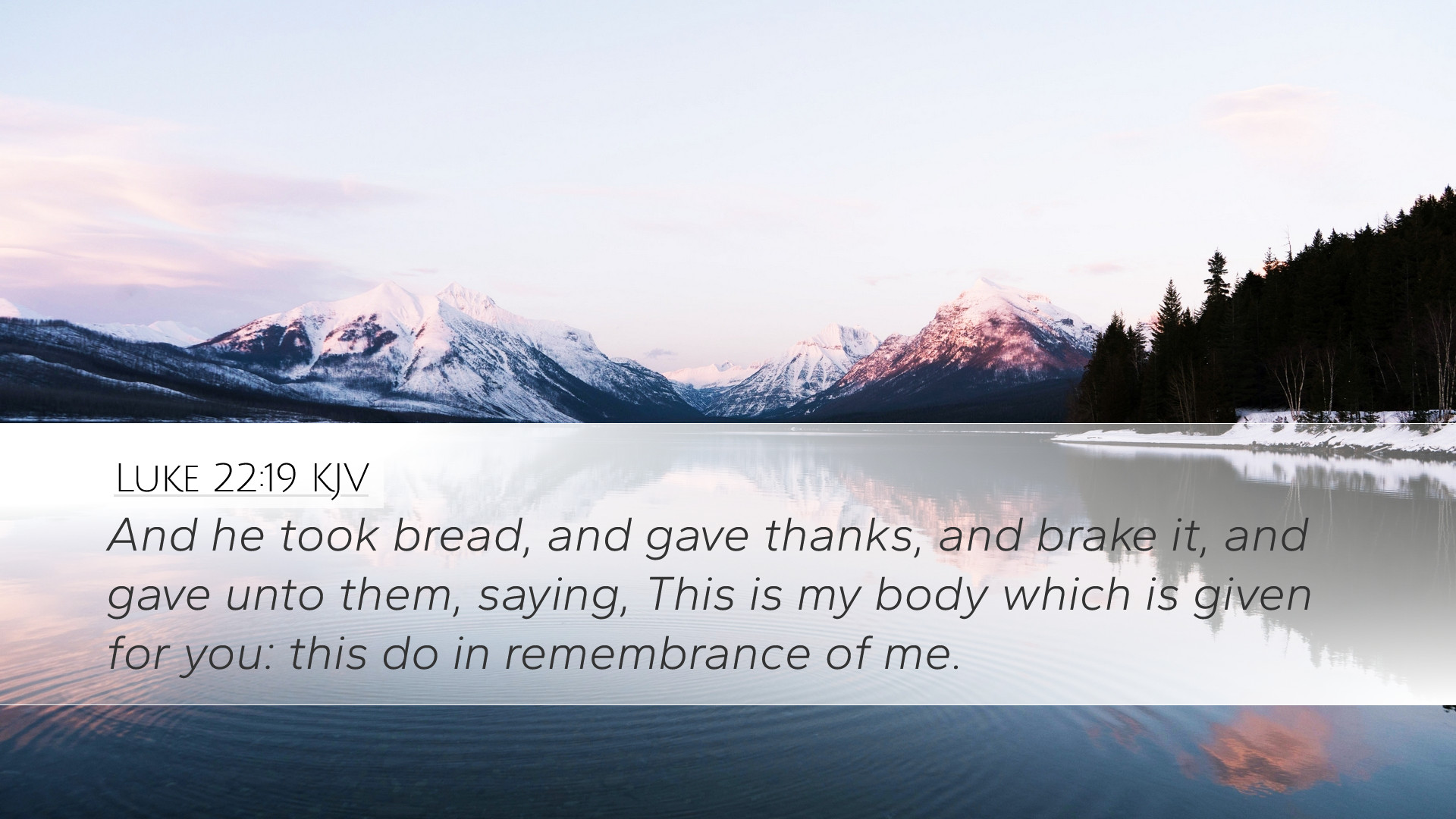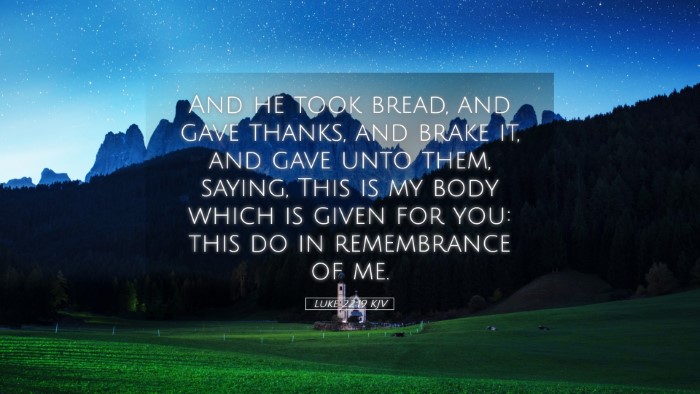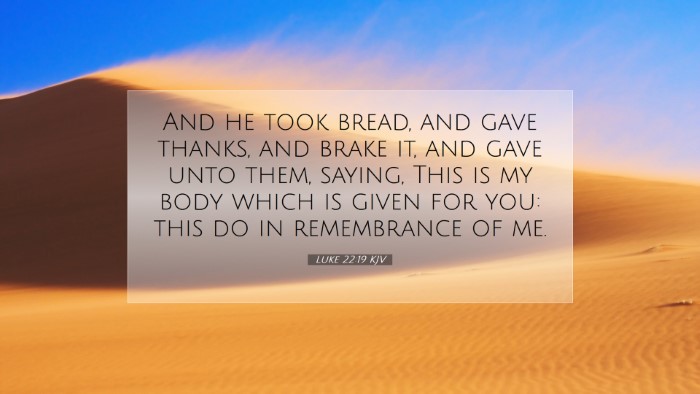Commentary on Luke 22:19
Luke 22:19 states: "And he took bread, and gave thanks, and brake it, and gave unto them, saying, This is my body which is given for you: this do in remembrance of me." This passage is significant in the establishment of the Lord’s Supper, also known as Communion or the Eucharist, profoundly articulating themes of sacrifice, remembrance, and the intimate relationship between Christ and His followers.
Context of the Passage
The context of Luke 22 centers around the events leading to the crucifixion of Jesus. This Lord's Supper occurs during the Passover meal, a time when Jewish people commemorate their liberation from slavery in Egypt. The profound symbolism of this meal ties into the Jewish tradition while simultaneously laying the groundwork for the New Covenant in Christ.
Commentary Insights
Matthew Henry's Commentary
Matthew Henry sees the breaking of bread as pivotal, emphasizing the symbolism of Christ’s body being broken for humanity. He notes that Jesus did not simply present bread; He “gave thanks” before breaking it, which showcases His gratefulness even as He faces imminent suffering.
- Gratitude: Henry highlights how this act teaches believers the importance of thankfulness, suggesting that gratefulness should precede our acts of worship.
- Symbolism: The bread represents Christ’s body, which was to be sacrificed. Henry posits that every time believers partake in communion, they are to reflect on the suffering of Christ.
Albert Barnes' Commentary
Albert Barnes delves into the interpretation of "This is my body." He clarifies that Jesus was not suggesting a literal transformation of the elements but rather indicating a symbolic representation of His sacrifice.
- Remembrance: Barnes underscores the directive "this do in remembrance of me," interpreting it as an exhortation to keep the memory of Christ's atonement alive within the hearts of believers.
- New Covenant: He points out the establishment of a New Testament by Christ's blood, referencing Isaiah 53:5, which speaks to the healing provided through His suffering.
Adam Clarke's Commentary
Adam Clarke emphasizes the contextual and ritual aspects of Jesus' actions. He notes that the breaking of bread was a common practice in Jewish gatherings, pointing to the communion establishing a new meaning in light of Jesus's impending sacrifice.
- Breaking Bread: Clarke elaborates that bread, in Jewish culture, symbolizes life. Jesus’ declaration signifies that His sacrifice brings spiritual life to believers.
- Hearts United: Clarke highlights the communal aspect of the meal, where believers gather as one body, dispelling any notion of isolation from the body of Christ.
Theological Implications
The theological weight of Luke 22:19 cannot be understated. It encapsulates significant Christian doctrines such as the Incarnation, atonement, and the community of believers.
1. The Incarnation
This verse emphasizes that Jesus was not only divine but also fully human. His body was given for humanity—an embodiment of God's love and the reality of His physical presence among us.
2. The Atonement
Jesus' sacrificial death is central to Christian faith. The Last Supper serves as a prelude to His passion, highlighting the necessity of His death for the redemption of sins.
3. Community of Believers
By instituting the Lord's Supper, Jesus creates a powerful ritual that fosters community among His followers. It reminds believers of their shared faith and calling.
Practical Applications
The insights derived from Luke 22:19 encourage pastors, students, and theologians to reflect on several practical applications:
- Celebration of Communion: Emphasize the significance of the Lord's Supper in church and personal life, using it as a time for reflection and thanksgiving.
- Teaching on the Sacrifice: Create teaching moments around the significance of Christ’s sacrifice, encouraging believers to understand and appreciate the depth of His love and suffering.
- Fostering Unity: Use the Lord’s Supper as a means to unite the church, breaking down barriers and fostering fellowship among believers.
Conclusion
In conclusion, Luke 22:19 unfolds layers of meaning essential for understanding the Christian faith. The insights from Matthew Henry, Albert Barnes, and Adam Clarke provide a framework for reflection on Jesus' ultimate sacrifice, the importance of communal remembrance, and the call to live out our faith in gratitude and unity.


